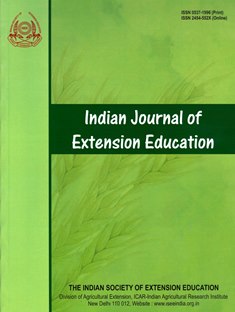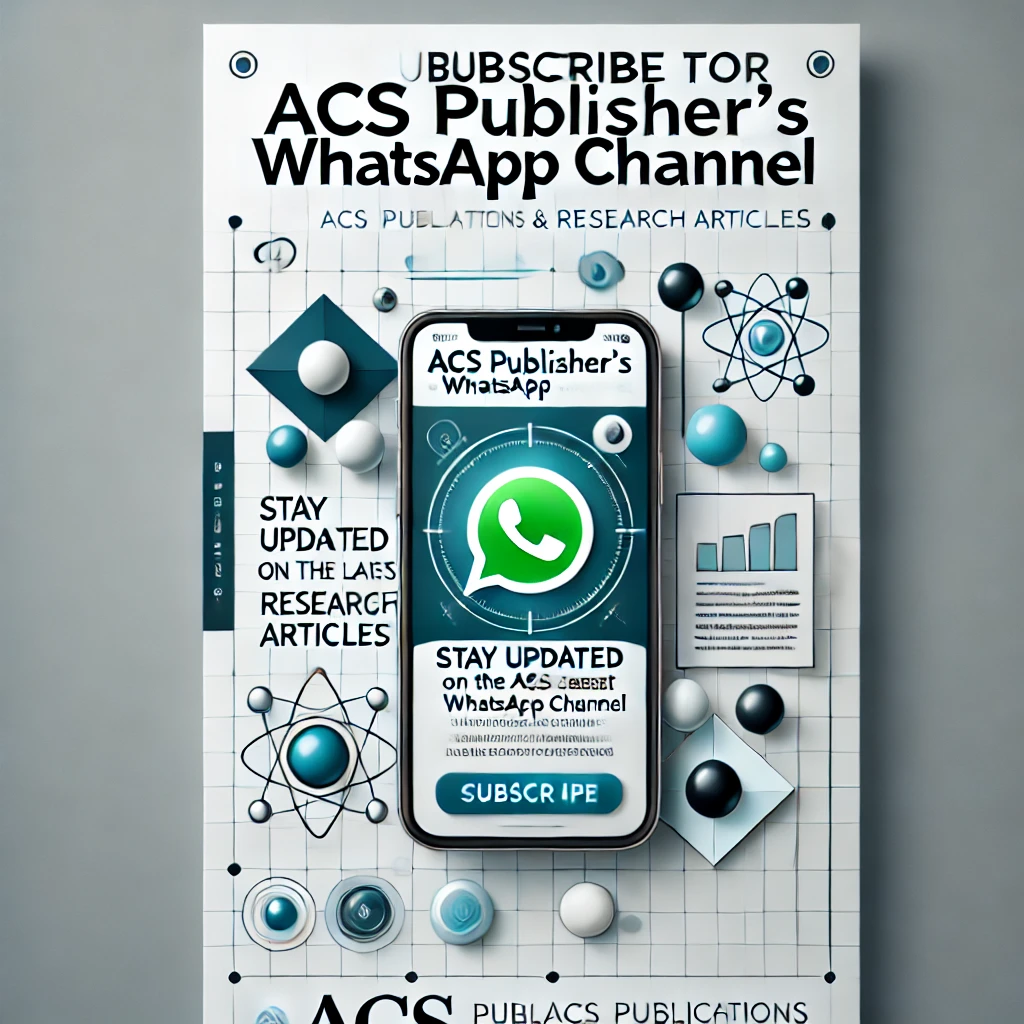Towards Digitally Enabled Extension Services: ICT Training Directions in Coastal Odisha
DOI:
https://doi.org/10.48165/IJEE.2025.61411Keywords:
Accessibility, Awareness, Competency, ICT, Priority training areas, Training needAbstract
The study was conducted in 2024 to assess the knowledge and accessibility of common ICT tools, training need assessment, and attendance in programs for ICT applications. A total of 248 public extension workers, chosen from four coastal districts, were split into two groups based on their hierarchical responsibilities. While both groups were aware of fundamental ICT tools like PCs and smartphones, there was a notable difference in advanced tools like AI interfaces, drones, and modern digital accessories. While Group 2 (junior officers) demonstrated greater exposure to emerging technology, they were less skilled in basic digital document management, which was prioritized for training. Group-1 members expressed the most prominent training needs in basic troubleshooting and cybersecurity, along with Google tools. There was an overall increasing trend in participation in activities related to ICT applications for years, which showcases a sort of optimism in skills’ upscaling efforts.
Downloads
References
Ahsan, M. B., Leifeng, G., Safiul Azam, F. M., Xu, B., Rayhan, S. J., Kaium, A., & Wensheng, W. (2022). Barriers, challenges, and requirements for ICT usage among Sub-assistant agricultural officers in Bangladesh: Toward sustainability in agriculture. Sustainability, 15(1), 782. https://doi.org/10.3390/su15010782
Ai, S., Tim, V., & Voeun, R. (2023). ICT skills needs assessment for technical education teacher in the 11 SEAMEO member countries. TVET@Asia, 20, 1–18. https://tvet-online.asia/20/ict-skills-needs-assessment-for-technical-education-teacher-in-the-11-seameo-member-countries/
Angello, C. (2015). Potential of information and communication technologies in promoting access to livestock information: Perceptions of urban livestock keepers in Tanzania. International Journal of Information Communication Technologies and Human Development, 7(2), 20–41. https://doi.org/10.4018/IJICTHD.2015040102
Asante, I. K. (2024). Digital technologies, competencies, and training needs of agricultural extension agents. African Journal of Rural Development, 9(4), 376–389. https://afjrdev.org/index.php/jos/article/view/511/382
Badhan, M. S. K. (2020). Assessment of sub-assistant agriculture officers’ level of ICT use in relation to their performance in agricultural extension service [M.Sc. (Agri.) thesis, She-e-Bangla Agricultural University, Dhaka, Bangladesh]. http://archive.saulibrary.edu.bd:8080/xmlui/bitstream/handle/123456789/3341/13-05302.pdf?sequence=1&isAllowed=y
Busungu, C., Gongwe, A., Naila, D. L., & Munema, L. (2019). Complementing extension officers in technology transfer and extension services: Understanding the influence of media as change agents in modern agriculture. International Journal of Research-Granthaalayah, 7(6), 248–269. https://doi.org/10.29121/granthaalayah.v7.i6.2019.802
Chandra, S., Singh, A. K., Ghadei, K., & Pradhan, S. (2023). Exploring the relationship between socio-economic factors and ICT adoption among farmers. Indian Journal of Extension Education, 59(3), 54–57. https://epubs.icar.org.in/index.php/IJEE/article/view/135917
Chaudhary, M. V., & Gardhariya, V. K. (2024). Relationship of farmer’s profile with the extent of use of ICTs by the farmers and effectiveness of ICTs in accessing agricultural information. Bhartiya Krishi Anusandhan Patrika, 39(3), 337–339. https://arccarticles.s3.amazonaws.com/PublishedArticle/Final-attachment-published-BKAP745-6089603e9087340b9bdcbbb1.pdf
Kumar, P. G., & Prasad, G. B. (2017). Perceived benefits and constraints analysis of ‘VASAT’ an ‘ICT’ initiative in India. Agricultural Science Digest, 37(3), 237–240. https://arccarticles.s3.amazonaws.com/webArticle/Final-attachment-published-D4425.pdf
Gow, G. A., Chowdhury, A., Ramjattan, J., & Ganpat, W. (2020). Fostering effective use of ICT in agricultural extension: Participant responses to an inaugural technology stewardship training program in Trinidad. The Journal of Agricultural Education and Extension, 26(4), 335–350. https://doi.org/10.1080/1389224X.2020.1718720
Haqyar, Z., Rohila, A. K., Malik, J. S., & Kumar, A. (2025). Usae pattern of information and communication technology tools among university faculty members. Indian Journal of Extension Education, 61(1), 108–112. https://epubs.icar.org.in/index.php/IJEE/article/view/158432
Jayasingh, D. K., & Mishra, B. (2024). Factors influencing occupational diversification among farmers in Khordha district of Odisha. Indian Journal of Extension Education, 60(3), 37–41. https://epubs.icar.org.in/index.php/IJEE/article/view/151291
Khan, S., Peer, Q. J. A., & Kubrevi, S. S. (2023). Training needs assessment of extension functionaries for the training programmes conducted by SAMETI. Journal of Community Mobilization and Sustainable Development, 18(2), 657–663.
Khatri, A., Lallawmkimi, M. C., Rana, P., Panigrahi, C. K., Minj, A., Koushal, S., & Ali, M. U. (2024). Integration of ICT in agricultural extension services: A review. Journal of Experimental Agriculture International, 46(12), 394–410. https://doi.org/10.9734/jeai/2024/v46i123146
Mukherjee, A., & Maity, A. (2015). Public–private partnership for convergence of extension services in Indian agriculture. Current Science, 109(9), 1557–1563. https://doi.org/10.18520/v109/i9/1557-1563
Musungwini, S., Gavai, P. V., Munyoro, B., & Chare, A. (2023). Emerging ICT technologies for agriculture, training, and capacity building for farmers in developing countries: A case study in Zimbabwe. In Applying drone technologies and robotics for agricultural sustainability (pp. 12–30). IGI Global. https://cris.library.msu.ac.zw/bitstream/11408/5390/1/Emerging%20ICT%20Technologies%20for%20Agriculture.pdf
Nyarko, D. A., & Kozári, J. (2021). Information and communication technologies (ICTs) usage among agricultural extension officers and its impact on extension delivery in Ghana. Journal of the Saudi Society of Agricultural Sciences, 20(3), 164–172. https://doi.org/10.1016/j.jssas.2021.01.002
Panda, S., Modak, S., Devi, Y. L., Das, L., Pal, P. K., & Nain, M. S. (2019). Access and usage of information and communication technology (ICT) to accelerate farmers’ income. Journal of Community Mobilization and Sustainable Development, 14(1), 200–205.
Sethy, S., & Mukhopadhyay, S. D. (2020). Use of ICTs by farmers: A study in Odisha. Asian Journal of Agricultural Extension, Economics & Sociology, 38(5), 74–86. https://doi.org/10.9734/ajaees/2020/v38i530349
Spielman, D., Lecoutere, E., Makhija, S., & Van Campenhout, B. (2021). Information and communications technology (ICT) and agricultural extension in developing countries. Annual Review of Resource Economics, 13(1), 177–201. https://doi.org/10.1146/annurev-resource-101520-080657
Tata, J. S., & McNamara, P. E. (2018). Impact of ICT on agricultural extension services delivery: Evidence from the Catholic Relief Services SMART skills and Farmbook project in Kenya. The Journal of Agricultural Education and Extension, 24(1), 89–110. https://doi.org/10.1080/1389224X.2017.1387160
Umunakwe, P. C., Madukwe, M. C., Anaeto, F. C., Nwakwasi, R. N., & Aja, O. O. (2025). Proficiency in digital extension service delivery among public agricultural extension personnel in Imo State, Nigeria. Journal of Agricultural Extension, 29(1), 63–75. https://doi.org/10.4314/jae.v29i1.7
Upadhyaya, L., Roy Burman, R., Sangeetha, V., Lenin, V., Sharma, J. P., & Dash, S. (2019). Digital inclusion: Strategies to bridge digital divide in farming community. Journal of Agricultural Science and Technology, 21(5), 1079–1089. https://jast.modares.ac.ir/article-23-17065-en.pdf
Downloads
Published
Issue
Section
License

This work is licensed under a Creative Commons Attribution-NonCommercial-NoDerivatives 4.0 International License.

